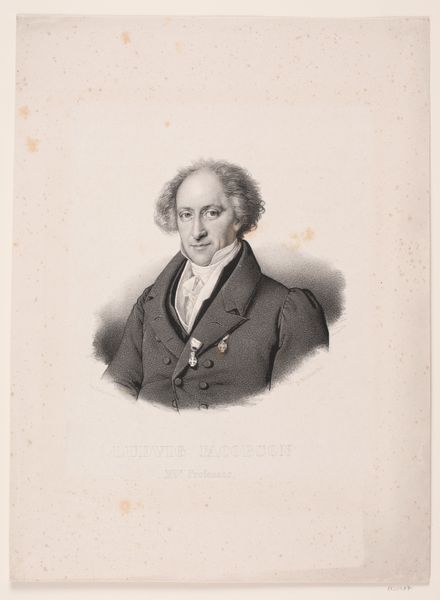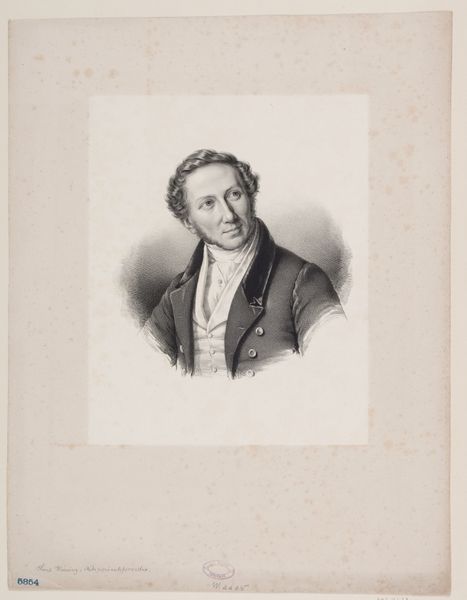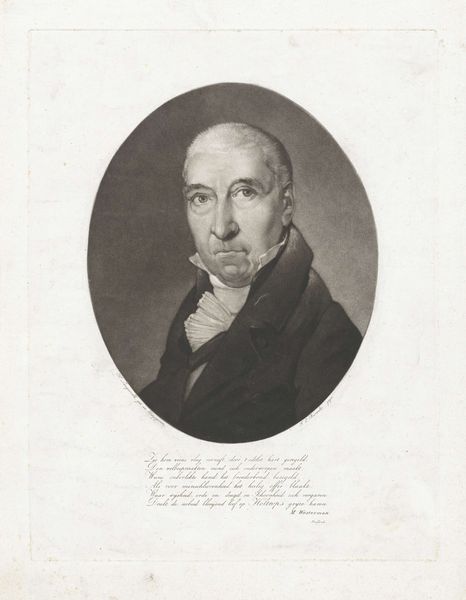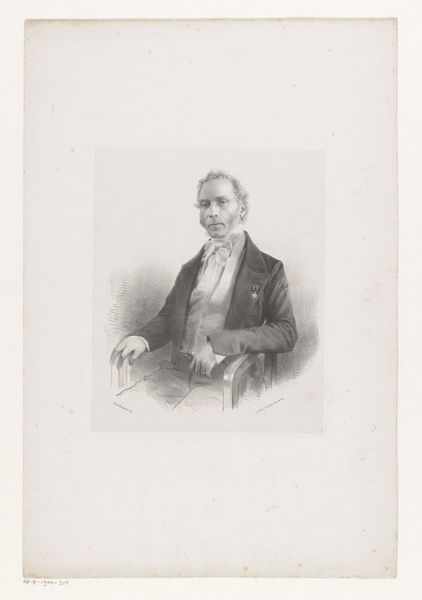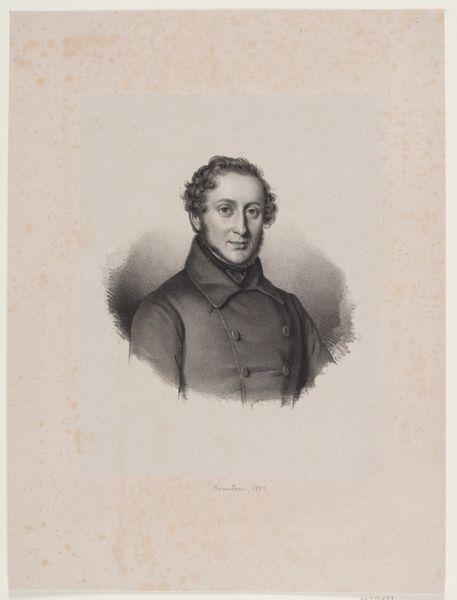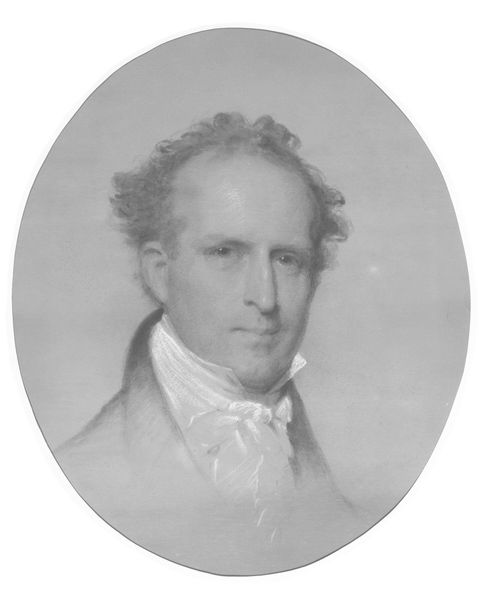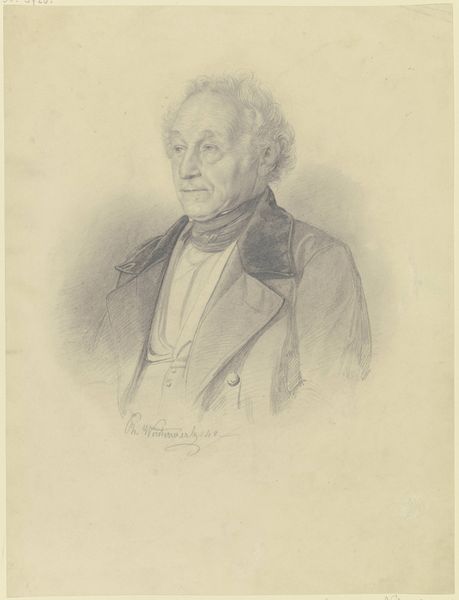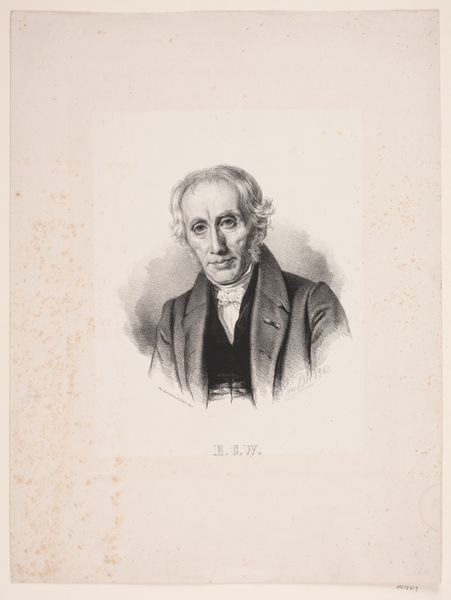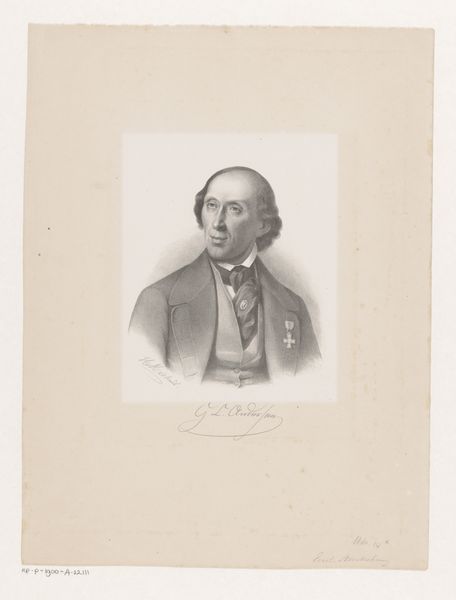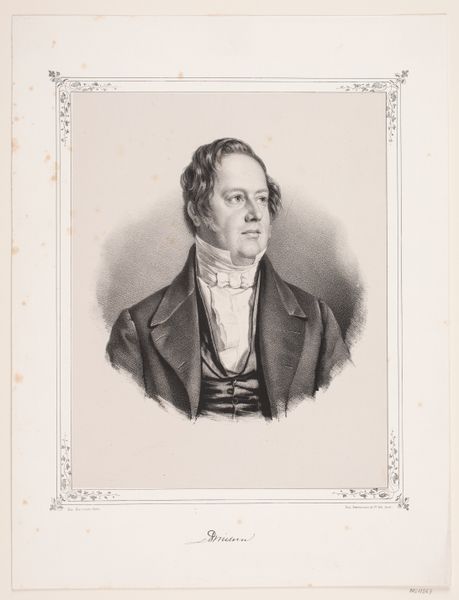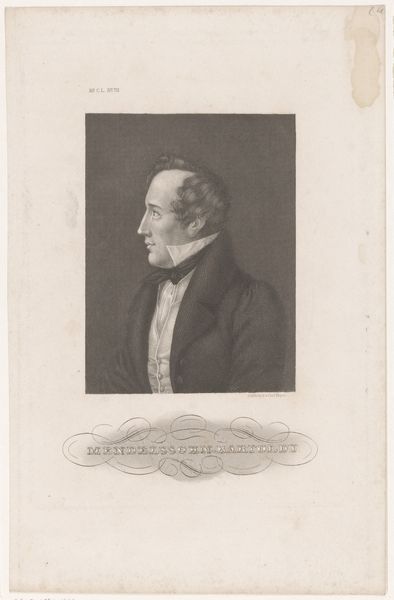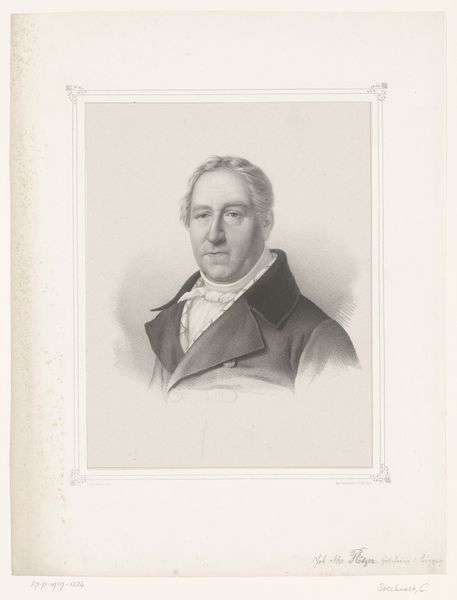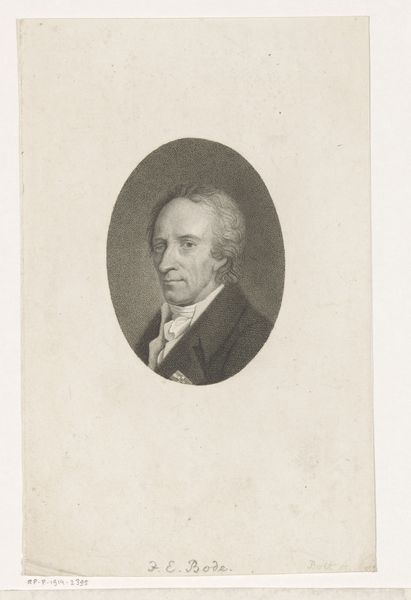
drawing, pencil
#
portrait
#
pencil drawn
#
drawing
#
amateur sketch
#
light pencil work
#
pencil sketch
#
old engraving style
#
charcoal drawing
#
portrait reference
#
pencil drawing
#
romanticism
#
pencil
#
portrait drawing
#
pencil work
#
realism
Dimensions: height 228 mm, width 180 mm
Copyright: Rijks Museum: Open Domain
Editor: Here we have a pencil drawing titled "Mansportret," which I believe translates to "Man's Portrait." It's from sometime between 1809 and 1869. The drawing is held at the Rijksmuseum, and it's a portrait of Alexander Cranendoncq. I find it quite striking in its simplicity, yet there's a certain intensity in the subject's gaze. What do you see in this piece? Curator: What interests me is the social context that prompted such portraiture. Think about the burgeoning middle class during this period. Portraiture was no longer solely the domain of the aristocracy. This drawing likely served a specific social function, perhaps solidifying Cranendoncq's status or commemorating a particular event. Consider, too, the rise of Romanticism and its impact on individual expression; do you see evidence of that here? Editor: Yes, now that you mention it, there's a focus on capturing the individual, but perhaps in a slightly more... reserved way? I guess what I'm asking is: Why pencil and not paint if solidifying status was the aim? Curator: Precisely. Pencil drawings became a more accessible, affordable way to commission or produce a portrait. It democratized the art form, reflecting shifts in social power. While oils declared status, the pencil drawing performed social mobility, announcing that the middle class were just like their well born peers. Look at how Cranendoncq is presented—the clothing, the posture—these visual cues speak volumes about the aspirations of a rising class. Who do you imagine the intended audience for this work? Editor: Probably other middle-class citizens who appreciate this aesthetic. That art can signify and shape class identity is interesting and makes this drawing so much more than a simple portrait. Curator: Absolutely! This work speaks volumes about social aspirations, shifting power dynamics, and the changing role of art itself in 19th-century society. Editor: Thank you! I’ll never look at a simple pencil drawing the same way.
Comments
No comments
Be the first to comment and join the conversation on the ultimate creative platform.
